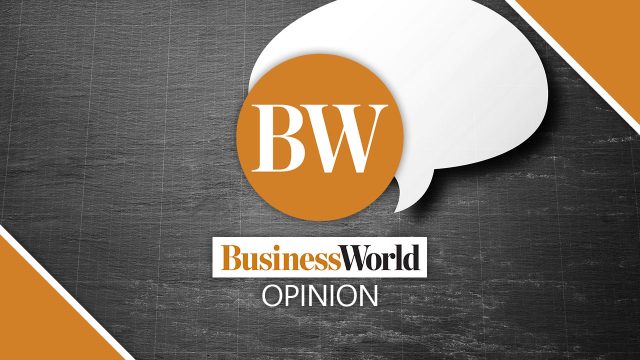This month is the 20th year that I have been involved in the free market movement. In late April 2004, I went to the US as an Atlas International Fellow. For one month I attended free market conferences, met leaders of market leaning think tanks, research institutes and NGOs in the US and other countries in the world. My trip was sponsored by the Atlas Economic Research Foundation, renamed as the Atlas Network.
I attended the McKinac Leadership Conference at the Mckinac Center in Midland, Michigan, headed by the very articulate and dynamic libertarian Larry Reed. Then the Annual Resource Bank Meeting of the Heritage Foundation, followed by the Atlas Liberty Forum (ALF) at the same hotel in Chicago. My hotel roommate then was the very famous Indian libertarian Barun Mitra, head of the Liberty Institute in Delhi.
This was followed by a series of meetings with free market think tanks in Washington DC, like the Americans for Tax Reforms (ATR) headed by Grover Norquist, the Cato Institute, the Tax Foundation, the Heritage Foundation, etc.
There was one Atlas official who was very friendly with me, Jo Kwong. A Chinese-American libertarian, she recommended me to the Friedrich Naumann Foundation for Freedom (FNF) and FNF has since invited me to their annual Eco-nomic Freedom Network (EFN) Asia conferences: Hong Kong in 2004, Phuket, Thailand in 2005, Kuala Lumpur in 2006, and so on until around 2018 in Singapore. Jo also secured funding for my participation in the ALF in Atlanta in 2008, Los Angeles in March 2009, and the Tear Down the Wall conference in Washington DC in Nov. 2009. In 2010 there was a reorganization in Atlas, Jo and her staff resigned, and ever since I got no sponsored invitations from Atlas.
Another friend who supported me and Minimal Government Thinkers was Julian Morris, then the head of the International Policy Network (IPN) in London. IPN sponsored my participation in the Global Development Summit in June 2005, a global free trade conference to help counter the narratives of the “more government, more taxes, more aid” G8 Summit in Scotland. IPN gave me a modest grant for sustenance of my think tank, plus it support-ed my participation in various free market meetings in Asia from 2006 to around 2011.
After 20 years, I look back and ask myself if the free market movement in the world has progressed, have governments and multilaterals stepped back from too much intervention and coercion in people’s everyday lives?
The quick answer is “no,” and I have observed this since around 2008.
Governments and the United Nations (UN) have invented all sorts of “crisis” narratives since the 1960s until today: population/food crisis, oil/energy crisis, health/NCDs crisis, education crisis, plastic/garbage crisis, climate crisis, virus crisis and so on.
Since all these were “unprecedented” and “man-made” crisis, then the “solutions” are also man-made or more government-focused: universal (or socialized) healthcare, universal education, sin/excise taxes, carbon/oil taxes, renewables subsidy, food subsidy, etc.
To help quantify how much governments have expanded, I checked the size of central government (local governments, if any, are not included) spending and government debts as percent of gross domestic product (GDP). I divided the countries below into four: In Group A are the European countries, in Group B are the North and South American nations, in Group C are the North Asian nations plus India, and in Group D are the ASEAN-6. For many, government spending indeed expanded from 2004 to 2019 (pre-lockdown), including the Philippines where the percentage rose from 19.4% to 21.7% of GDP.
When the lockdown dictatorship was imposed in 2020 in many countries around the world, economic freedom was severely restricted and punished in the name of “fighting the virus.” Government spending jumped from 2020 to 2022, and onwards until 2023.
A more graphic measurement is central government debt as a share of GDP. Here, almost all governments expanded in 2023 over their 2004 levels, except Russia, India, Indonesia, Taiwan and the Philippines (see Table 1).

In the mid 2000s, the Philippines (under the Gloria Macapagal Arroyo administration) had a big public debt (numerator) with a small GDP size (denominator) so the quotient was high — 71% in 2004. With fast growth and hence, larger GDP size during the Benigno Aquino III administration, the government debt/GDP ratio declined to 46% in 2012 and 37% in 2016, and this continued until 2019.
Many free-market groups and leaders made the big mistake of following the United Nations, the World Health Organization, and government narratives that, a.) a lockdown dictatorship was necessary while waiting for the vaccines, b.) that there was no natural immunity via natural infection from the virus, only vax immunity should be trusted, and, c.) only the virus evolves, humans do not evolve and adapt, especially when aided by decades-old and proven treatment.
I checked the websites of some free market think tanks in Asia, Europe, and the US, and I discovered that many of them supported the lockdown, or at least did not issue statements opposing the lockdown. They sheepishly al-lowed government coercion to expand indefinitely. That was so sad.
There are two new trends seen in many developing countries because of the lockdowns and mandatory vaccination. One is that there were high excess deaths in 2021 when there was forced vaccination in many countries.
As I noted in this column last week (“On oil economics and Philippines vital statistics,” April 18), “there were no excess deaths in 2020 over 2019 despite the high number of reported COVID cases, but there was a high num-ber of excess deaths in 2021 (when mass vaccination was done in March 2021 onwards) compared to 2020 and 2019. There were 20,000/month excess deaths in 2021.”
The second trend is the declining birth rates in many countries. In the Philippines, for the period January-August of each year covered, the decline on average was 20,600 fewer births per month from 2020 to 2023.
Combine these two trends — excess deaths in 2021 and declining births in 2021 onwards — the result is declining overall life expectancy in many countries (see Table 2).

The weakening of the free-market movement does not keep me from continuing my advocacy for market-oriented reforms and less government coercion and taxation, explicit or implicit. High and sustained economic growth and job creation is not possible under a restrictive, heavily regulated, and over-taxed business environment.
Bienvenido S. Oplas, Jr. is the president of Bienvenido S. Oplas, Jr. Research Consultancy Services, and Minimal Government Thinkers. He is an international fellow of the Tholos Foundation.
minimalgovernment@gmail.com



























